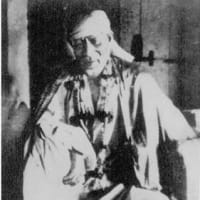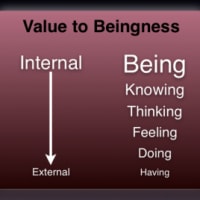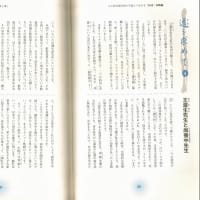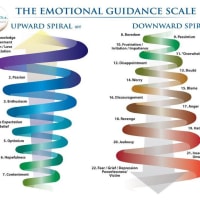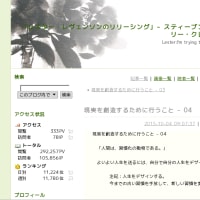page=31 - 習慣の記憶を手放すこと
page=31
t if you first release whatever feeling is making you feel like you need to eat the pie, and then you let yourself have it if you still want it, it’s easier. This creates the space to get into releasing around the habit, and you’ll soon notice the habit drop away.
An actress I know thought it was very important for obvious reasons because of her trade to be a certain weight. At the time of this story, she’d been trying to lose 20 pounds for over 20 years and could never reach what she considered her ideal size. She tried every diet imaginable. She exercised like a fiend. In fact, she was running so much that she destroyed her knees and could-n’ t run anymore. She had to find another aerobic exercise to do. We used to teach the Sedona Method over two weekends―now we teach it over one weekend―and the instructor suggested to her that, during the week in between, she try the little trick I described above: to let herself eat whatever she wanted as long as she released first. This helped her have a breakthrough.
About two days later, she went out and had the first hot fudge sundae she’d had in years, and she actually enjoyed it and felt satisfied. However, because she was releasing before she reached for the food every time she ate that week, she lost five pounds in only five days. Within about six months, she had lost 20 pounds. It is now many years later, and the last time I saw her she was still maintaining her ideal weight.
If it’s possible for this actress and the thousands of other people who have used this technique effectively, it’s possible for you. And it’s not complicated. Rather than trying to fix or change your habit, make a pact with yourself that the next time you want to reach for a cigarette, the next time you want to turn on the television, the next time you want to reach for a dessert, you can do it if you still want to after you release. You will notice that the habit will fall away gradually, or very quickly. I’ve literally seen hundreds of people stop smoking this way. So, experiment with it on your own, and you’ll see that it’s a very effective way of applying the Method.
Now that we’ve discussed the principles of breaking habits and going beyond addiction, let’s get into some practical applications.
Letting Go of the Memory of the Habit
習慣の記憶を手放すこと
A very powerful way of breaking habits is to use the perspective, which we discussed at the end of Chapter 12, that there are no problems (see page 268). This is because habits, like any other problems, are merely patterns in consciousness that have become customary. I have seen whole habits drop away very quickly and easily when an individual caught this tendency of expectation and let it go.
習慣を中断する非常に強力な方法は展望を使うことです。そして、第12章(問題(268ページを見ます)がありません)の終わりにそれを我々は検討しました。
これは、習慣(他のどの問題のようなも)が単に慣習的になった意識のパターンだけであるからです。
個人が予想のこの傾向を捕えて、ほっておいたとき、私は全部の習慣が非常に迅速かつ容易に傾斜するのを見ました。
The one disagreement I have with various 12-step programs is the continual affirmation and reaffirmation by people speaking in their meetings of: “I am a _____(insert your particular addiction, e.g., alcoholic, sex addict, or overeater).” This may be extremely helpful in the beginning to break through denial, but after someone has completed the steps of the program, and kicked his or her particular habit, it would be much better to affirm: “Hi, I am _____(insert your name) and I used to be a _____ (insert the particular addiction).”
I had a friend who’d learned the Method and was also very involved with 12-step programs, and he fought me on this point. But he had gotten really stuck in his life and was unable to let go no matter how hard he tried, because he kept going back into agreement with his past problems. One day, I finally insisted that he at least give the perspective that problems are only memories a try. After only ten minutes of working like this, his 18-month stuckness completely dropped away, and his life totally turned around.
If you can allow for the possibility that the past does not have to dictate the future, the results you’ll experience may be miraculous.
Begin by allowing yourself to remember a habit that you used to believe you had. Notice that I have purposely phrased this question in the past tense.
Then, ask yourself: Could I allow myself to remember how I used to believe I had this habit?
Next, ask: Would I like to change that from the past?
If the answer is “yes,” ask: Could I let go of wanting to change that from the past? Then let go as best you can.
Simply move on to the next step if the answer is “no.”
The completion question in this series is: Could I let go of wanting to believe I have that habit again? Or, Could I let go of wanting to have that habit again?
As always, just do your best to let go. If you find that you’re still clinging to the memory of the habit in this moment, however, repeat the steps from the beginning until you can let go fully.
“I was addicted to sleeping pills and booze. Every night for three years, I took a sleeping pill after five to six drinks to blot out life and sleep, never realizing the lengths to which I was going to avoid growth. I had terrible colitis from stress―would spend days in bed with a heating pad. At the end of the course, never another sleeping pill and no more booze. After a year, I finally can choose to have an occasional glass of wine―never any more colitis.”-S.D., Phoenix, AZ
Advantages/Disadvantages and Likes/Dislikes
メリット/デメリットと好き/嫌い
The Advantages/Disadvantages Process and the Likes/ Dislikes Process are great tools for working on a habit. If you’ve been trying unsuccessfully to change a habit, understand that there is usually at least one hidden advantage or liking for that particular behavior just below your conscious awareness. If you can elevate this perceived benefit into your conscious awareness and let it go, you’ll find that the habit drops away by itself. Remember, if you’re working directly on a habit, work on it in the past tense. Give yourself the possibility that it may not reoccur.
Advantages/Disadvantages ProcessとLikes/Dislikes Processは、習慣に取り組むためのすばらしい道具です。
あなたが失敗して習慣を変えようとしていたならば、少なくとも1つの隠れた利点またはその特定のふるまいに対する好みが通常ちょうどあなたの意識的な認識の下にあると思ってください。
意識的な認識へこの認められた利益を上げることができて、ほっておくことができるならば、あなたは習慣が単独で傾斜するとわかります。
過去形で、それの(あなたが直接習慣に取り組んでいるならば)研究を忘れないでください。
それが再発生しないかもしれないという可能性を得てください。
Immediately after attending a Seven-day Retreat in Sedona, Steve decided to apply the Method to his shopping addiction. He loves quality men’s clothing so much that he even published a book about finding good deals, which he was researching at the time. “I tend to be extreme about everything I do,” he says. “When I got to the stores, it was as though they were lobbing things at me to say ‘yes’ to. Technically, I could afford them, but did I really need to allocate my resources that way? There must have been five or six times as much stuff as the items I finally bought that I initially wanted to purchase.
“Using the principles I’d learned, I told myself that if I still wanted something after releasing on it, I could have it. When I came across an excellent shirt at an outlet place, I released and set up a few caveats, too. The advantages were that a) the item fit; b) I would be able to wear it that season, instead of merely adding it to my wardrobe; c) I had already bought a tie, which it matched perfectly; and d) it was 80 percent off. As these outweighed the disadvantages, I bought it. But, later in the day, I used the same technique, and there was a bunch of other stuff that I didn’t buy. So I know it works.”
Releasing Your Habits
あなたの習慣をリリースすること
Although it’s ideal to release on a habit before you indulge it, you often won’t catch yourself in time to make a different, preferred choice. In retrospect, you’ll know you could have released first, but you didn’t. Now you’ve “gone and done it again,” and you have some feelings about it―guilt, shame, anger, sadness, etc.
No need to be concerned. Releasing after the fact can also be a powerful way to break habits. Each time you release on the feelings related to a habit or an addiction―before, during, or after―you weaken the pull in that particular direction. Eventually, the process of releasing will help you change your behavior completely. You will incorporate it into your everyday life.
Remember, it is our patterns of feeling that create our patterns of behavior. As we break our patterns of feeling, the behaviors drop away effortlessly, too.
Begin by making yourself comfortable. Then think of a specific habit from which you would like to be free. It could be an addiction to alcohol, cigarettes, drugs, sex, overeating, watching TV, or anything else that makes you stuck. Once you have a habit in mind, focus inwardly, and get in touch with your NOW feeling about it.
Could you welcome the feeling and allow it to be present?
Notice what it feels like to have this particular addiction. Also notice how you disapprove of yourself for this recurring behavior. And, again, focus on your NOW feeling about the addiction.
Would you allow yourself to dig a little deeper and see whether that feeling comes from a sense of wanting approval, control, or security?
Could you let go of whichever want it is?
Repeat the above steps as many times as you need to begin feeling lighter, more spacious, and relaxed. As you release your feelings about the habit, your goal is to release to the point that it feels okay either way―whether you do it or you don’t. Understandably, this may seem like a stretch. However, if you can release to the point where it feels entirely as acceptable to you to keep the habit as it would be to let it go, you will take away the fight. It will then be a lot easier to become free of your habit or addiction.
Focus again on how you feel about the addiction. Just let yourself feel the feeling you have about that habit.
Does the feeling come from wanting approval, control, or safety? Could you let the want go?
Repeat the steps above a few more times.
Now, recall a specific time when the habit was in operation, a time when you indulged that particular behavior. Perhaps you reached for a drink or a cigarette. Maybe you ate an extra cookie. Whatever time you’re focusing on, allow yourself to get in touch with the feelings that were present right before you took that particular action.
Could you welcome that feeling?
Can you identify the want that underlies and motivates the feeling?
Could you let it go?
Focus again on that same time, and see how you felt right before you did it. Was there another feeling that pushed you in the direction of your habit? This could have been hunger, anger, sadness, a sense of emptiness, or a feeling of compulsion. It may have been subtle or it may have been strong.
Very often we use addictive behaviors to anesthetize ourselves to our feelings. So it may not be easy at first to get in touch with them. Please stick with the process, however. The more you do this work, the more obvious your feelings will become.
Whatever your feeling was before you did the habitual behavior, let yourself experience it again now, as best you can.
Check to see if it comes from wanting approval, control, or security.
Could you let it go?
Next, see how you felt when you were actually doing that particular behavior: eating the cookie, drinking the drink, smoking the cigarette, or whatever it is that you’re focusing on. Pay close attention to any artificial good feeling that you were getting from doing it, as well as to any other feelings you had at the time. Maybe there was also a struggle going on within you.
Could you welcome how you feel as you picture yourself right in the middle of doing the action?
Which want is stirred up in this moment?
Could you let it go?
Very often there’s a sense of relief or misappropriated enjoyment from habituated behaviors. But as we let that go, we feel enjoyment directly without the behavior, since good feelings are always available to us in every moment. Remember, all limiting feelings―even so-called positive ones―are releasable.
Focus again on that same specific time when you were engaged in this particular behavior. Identify and welcome the feelings that motivated you to do it. Allow them.
Is there an underlying want?
Could you let it go?
Now, remember how you felt immediately after doing that particular behavior. When you were done, did you feel any guilt, regret, disgust, or any other feeling? Perhaps you thought: Oh my god, I did it again! See if there was a sense of disapproval or being out of control. Could you do your best to become aware of that feeling now?
Remember, these feelings are only feelings.
Underneath them, is there a sense of wanting approval, control, or security?
Could you let it go?
Repeat the steps above several more times.
Take a moment to notice how your overall feeling has already shifted in relationship to this particular habit or addiction. It may only be a small shift, or it may be a major shift. However much the shift is, it indicates that you’ve begun to move in a positive direction.
Now, tune in to how you feel about breaking the habit. People frequently have residual feelings from previous attempts to change habits. These could be times when you said, “I’m going to stop,” but you weren’t able. If you have a residual feeling or doubt about changing this habit, simply welcome that feeling into your awareness.
Is there an underlying sense of wanting approval, control, or security?
Could you let it go?
Take another inward look and allow yourself to feel however you feel right now about going beyond the addiction or habit. Could you embrace the feeling?
Do you want approval, control, or security?
Could you let it go?
Rick: No Longer Ruled by Chocolate
Rick used to be addicted to peanut M&Ms. In his own words, “I was a candy monster. There was no day that could go by without them. Some nights, I had to run out at 10 P.M. to get them. Ninety percent of the reason I went to the movies was to indulge myself with a big bag of them. I honestly didn’t care what was playing.” But now he doesn’t crave them. What helped him was releasing on the feeling of needing M&Ms―really welcoming that want into his awareness. He still enjoys them occasionally, but they gradually became less than the primary focus of his activities. “The truth is that we all let ourselves be controlled by things in our lives. When we release on them, it frees up our power. Although I used to jump through hoops for M&Ms, I don’t have to anymore. The greatest gift of this process was how it freed me up to enjoy the present moment. To be there when I’m there. I’m more in the NOW than ever before.”
A Couple of Extra Points
2、3のエクストラポイント
I suggest that you use the focused releasing process often (see page 306). Every time that you do it, you’ll
page=31
t if you first release whatever feeling is making you feel like you need to eat the pie, and then you let yourself have it if you still want it, it’s easier. This creates the space to get into releasing around the habit, and you’ll soon notice the habit drop away.
An actress I know thought it was very important for obvious reasons because of her trade to be a certain weight. At the time of this story, she’d been trying to lose 20 pounds for over 20 years and could never reach what she considered her ideal size. She tried every diet imaginable. She exercised like a fiend. In fact, she was running so much that she destroyed her knees and could-n’ t run anymore. She had to find another aerobic exercise to do. We used to teach the Sedona Method over two weekends―now we teach it over one weekend―and the instructor suggested to her that, during the week in between, she try the little trick I described above: to let herself eat whatever she wanted as long as she released first. This helped her have a breakthrough.
About two days later, she went out and had the first hot fudge sundae she’d had in years, and she actually enjoyed it and felt satisfied. However, because she was releasing before she reached for the food every time she ate that week, she lost five pounds in only five days. Within about six months, she had lost 20 pounds. It is now many years later, and the last time I saw her she was still maintaining her ideal weight.
If it’s possible for this actress and the thousands of other people who have used this technique effectively, it’s possible for you. And it’s not complicated. Rather than trying to fix or change your habit, make a pact with yourself that the next time you want to reach for a cigarette, the next time you want to turn on the television, the next time you want to reach for a dessert, you can do it if you still want to after you release. You will notice that the habit will fall away gradually, or very quickly. I’ve literally seen hundreds of people stop smoking this way. So, experiment with it on your own, and you’ll see that it’s a very effective way of applying the Method.
Now that we’ve discussed the principles of breaking habits and going beyond addiction, let’s get into some practical applications.
Letting Go of the Memory of the Habit
習慣の記憶を手放すこと
A very powerful way of breaking habits is to use the perspective, which we discussed at the end of Chapter 12, that there are no problems (see page 268). This is because habits, like any other problems, are merely patterns in consciousness that have become customary. I have seen whole habits drop away very quickly and easily when an individual caught this tendency of expectation and let it go.
習慣を中断する非常に強力な方法は展望を使うことです。そして、第12章(問題(268ページを見ます)がありません)の終わりにそれを我々は検討しました。
これは、習慣(他のどの問題のようなも)が単に慣習的になった意識のパターンだけであるからです。
個人が予想のこの傾向を捕えて、ほっておいたとき、私は全部の習慣が非常に迅速かつ容易に傾斜するのを見ました。
The one disagreement I have with various 12-step programs is the continual affirmation and reaffirmation by people speaking in their meetings of: “I am a _____(insert your particular addiction, e.g., alcoholic, sex addict, or overeater).” This may be extremely helpful in the beginning to break through denial, but after someone has completed the steps of the program, and kicked his or her particular habit, it would be much better to affirm: “Hi, I am _____(insert your name) and I used to be a _____ (insert the particular addiction).”
I had a friend who’d learned the Method and was also very involved with 12-step programs, and he fought me on this point. But he had gotten really stuck in his life and was unable to let go no matter how hard he tried, because he kept going back into agreement with his past problems. One day, I finally insisted that he at least give the perspective that problems are only memories a try. After only ten minutes of working like this, his 18-month stuckness completely dropped away, and his life totally turned around.
If you can allow for the possibility that the past does not have to dictate the future, the results you’ll experience may be miraculous.
Begin by allowing yourself to remember a habit that you used to believe you had. Notice that I have purposely phrased this question in the past tense.
Then, ask yourself: Could I allow myself to remember how I used to believe I had this habit?
Next, ask: Would I like to change that from the past?
If the answer is “yes,” ask: Could I let go of wanting to change that from the past? Then let go as best you can.
Simply move on to the next step if the answer is “no.”
The completion question in this series is: Could I let go of wanting to believe I have that habit again? Or, Could I let go of wanting to have that habit again?
As always, just do your best to let go. If you find that you’re still clinging to the memory of the habit in this moment, however, repeat the steps from the beginning until you can let go fully.
“I was addicted to sleeping pills and booze. Every night for three years, I took a sleeping pill after five to six drinks to blot out life and sleep, never realizing the lengths to which I was going to avoid growth. I had terrible colitis from stress―would spend days in bed with a heating pad. At the end of the course, never another sleeping pill and no more booze. After a year, I finally can choose to have an occasional glass of wine―never any more colitis.”-S.D., Phoenix, AZ
Advantages/Disadvantages and Likes/Dislikes
メリット/デメリットと好き/嫌い
The Advantages/Disadvantages Process and the Likes/ Dislikes Process are great tools for working on a habit. If you’ve been trying unsuccessfully to change a habit, understand that there is usually at least one hidden advantage or liking for that particular behavior just below your conscious awareness. If you can elevate this perceived benefit into your conscious awareness and let it go, you’ll find that the habit drops away by itself. Remember, if you’re working directly on a habit, work on it in the past tense. Give yourself the possibility that it may not reoccur.
Advantages/Disadvantages ProcessとLikes/Dislikes Processは、習慣に取り組むためのすばらしい道具です。
あなたが失敗して習慣を変えようとしていたならば、少なくとも1つの隠れた利点またはその特定のふるまいに対する好みが通常ちょうどあなたの意識的な認識の下にあると思ってください。
意識的な認識へこの認められた利益を上げることができて、ほっておくことができるならば、あなたは習慣が単独で傾斜するとわかります。
過去形で、それの(あなたが直接習慣に取り組んでいるならば)研究を忘れないでください。
それが再発生しないかもしれないという可能性を得てください。
Immediately after attending a Seven-day Retreat in Sedona, Steve decided to apply the Method to his shopping addiction. He loves quality men’s clothing so much that he even published a book about finding good deals, which he was researching at the time. “I tend to be extreme about everything I do,” he says. “When I got to the stores, it was as though they were lobbing things at me to say ‘yes’ to. Technically, I could afford them, but did I really need to allocate my resources that way? There must have been five or six times as much stuff as the items I finally bought that I initially wanted to purchase.
“Using the principles I’d learned, I told myself that if I still wanted something after releasing on it, I could have it. When I came across an excellent shirt at an outlet place, I released and set up a few caveats, too. The advantages were that a) the item fit; b) I would be able to wear it that season, instead of merely adding it to my wardrobe; c) I had already bought a tie, which it matched perfectly; and d) it was 80 percent off. As these outweighed the disadvantages, I bought it. But, later in the day, I used the same technique, and there was a bunch of other stuff that I didn’t buy. So I know it works.”
Releasing Your Habits
あなたの習慣をリリースすること
Although it’s ideal to release on a habit before you indulge it, you often won’t catch yourself in time to make a different, preferred choice. In retrospect, you’ll know you could have released first, but you didn’t. Now you’ve “gone and done it again,” and you have some feelings about it―guilt, shame, anger, sadness, etc.
No need to be concerned. Releasing after the fact can also be a powerful way to break habits. Each time you release on the feelings related to a habit or an addiction―before, during, or after―you weaken the pull in that particular direction. Eventually, the process of releasing will help you change your behavior completely. You will incorporate it into your everyday life.
Remember, it is our patterns of feeling that create our patterns of behavior. As we break our patterns of feeling, the behaviors drop away effortlessly, too.
Begin by making yourself comfortable. Then think of a specific habit from which you would like to be free. It could be an addiction to alcohol, cigarettes, drugs, sex, overeating, watching TV, or anything else that makes you stuck. Once you have a habit in mind, focus inwardly, and get in touch with your NOW feeling about it.
Could you welcome the feeling and allow it to be present?
Notice what it feels like to have this particular addiction. Also notice how you disapprove of yourself for this recurring behavior. And, again, focus on your NOW feeling about the addiction.
Would you allow yourself to dig a little deeper and see whether that feeling comes from a sense of wanting approval, control, or security?
Could you let go of whichever want it is?
Repeat the above steps as many times as you need to begin feeling lighter, more spacious, and relaxed. As you release your feelings about the habit, your goal is to release to the point that it feels okay either way―whether you do it or you don’t. Understandably, this may seem like a stretch. However, if you can release to the point where it feels entirely as acceptable to you to keep the habit as it would be to let it go, you will take away the fight. It will then be a lot easier to become free of your habit or addiction.
Focus again on how you feel about the addiction. Just let yourself feel the feeling you have about that habit.
Does the feeling come from wanting approval, control, or safety? Could you let the want go?
Repeat the steps above a few more times.
Now, recall a specific time when the habit was in operation, a time when you indulged that particular behavior. Perhaps you reached for a drink or a cigarette. Maybe you ate an extra cookie. Whatever time you’re focusing on, allow yourself to get in touch with the feelings that were present right before you took that particular action.
Could you welcome that feeling?
Can you identify the want that underlies and motivates the feeling?
Could you let it go?
Focus again on that same time, and see how you felt right before you did it. Was there another feeling that pushed you in the direction of your habit? This could have been hunger, anger, sadness, a sense of emptiness, or a feeling of compulsion. It may have been subtle or it may have been strong.
Very often we use addictive behaviors to anesthetize ourselves to our feelings. So it may not be easy at first to get in touch with them. Please stick with the process, however. The more you do this work, the more obvious your feelings will become.
Whatever your feeling was before you did the habitual behavior, let yourself experience it again now, as best you can.
Check to see if it comes from wanting approval, control, or security.
Could you let it go?
Next, see how you felt when you were actually doing that particular behavior: eating the cookie, drinking the drink, smoking the cigarette, or whatever it is that you’re focusing on. Pay close attention to any artificial good feeling that you were getting from doing it, as well as to any other feelings you had at the time. Maybe there was also a struggle going on within you.
Could you welcome how you feel as you picture yourself right in the middle of doing the action?
Which want is stirred up in this moment?
Could you let it go?
Very often there’s a sense of relief or misappropriated enjoyment from habituated behaviors. But as we let that go, we feel enjoyment directly without the behavior, since good feelings are always available to us in every moment. Remember, all limiting feelings―even so-called positive ones―are releasable.
Focus again on that same specific time when you were engaged in this particular behavior. Identify and welcome the feelings that motivated you to do it. Allow them.
Is there an underlying want?
Could you let it go?
Now, remember how you felt immediately after doing that particular behavior. When you were done, did you feel any guilt, regret, disgust, or any other feeling? Perhaps you thought: Oh my god, I did it again! See if there was a sense of disapproval or being out of control. Could you do your best to become aware of that feeling now?
Remember, these feelings are only feelings.
Underneath them, is there a sense of wanting approval, control, or security?
Could you let it go?
Repeat the steps above several more times.
Take a moment to notice how your overall feeling has already shifted in relationship to this particular habit or addiction. It may only be a small shift, or it may be a major shift. However much the shift is, it indicates that you’ve begun to move in a positive direction.
Now, tune in to how you feel about breaking the habit. People frequently have residual feelings from previous attempts to change habits. These could be times when you said, “I’m going to stop,” but you weren’t able. If you have a residual feeling or doubt about changing this habit, simply welcome that feeling into your awareness.
Is there an underlying sense of wanting approval, control, or security?
Could you let it go?
Take another inward look and allow yourself to feel however you feel right now about going beyond the addiction or habit. Could you embrace the feeling?
Do you want approval, control, or security?
Could you let it go?
Rick: No Longer Ruled by Chocolate
Rick used to be addicted to peanut M&Ms. In his own words, “I was a candy monster. There was no day that could go by without them. Some nights, I had to run out at 10 P.M. to get them. Ninety percent of the reason I went to the movies was to indulge myself with a big bag of them. I honestly didn’t care what was playing.” But now he doesn’t crave them. What helped him was releasing on the feeling of needing M&Ms―really welcoming that want into his awareness. He still enjoys them occasionally, but they gradually became less than the primary focus of his activities. “The truth is that we all let ourselves be controlled by things in our lives. When we release on them, it frees up our power. Although I used to jump through hoops for M&Ms, I don’t have to anymore. The greatest gift of this process was how it freed me up to enjoy the present moment. To be there when I’m there. I’m more in the NOW than ever before.”
A Couple of Extra Points
2、3のエクストラポイント
I suggest that you use the focused releasing process often (see page 306). Every time that you do it, you’ll










